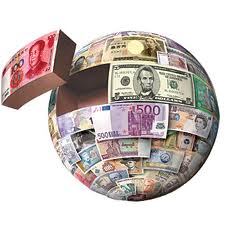HBR has previously explored the impact of competition, product and demand on the pricing strategies of businesses. In this article, we build on this by looking at the pricing in the global context. Largely, MNEs have to adapt prices to account for local conditions. This includes factors relating to the customers, product and market.
Customer
The golden rule of standardisation extends to pricing. If prices can be extended across regional markets, multinationals reduce the complexity of marketing and their organisational structure.
In the pursuit of standardised prices, psychologists have worked with marketers to establish pricing techniques which are effective in raising sales across cultures. Bundled prices, along with ‘99p’ selling, subscription and discounting models, can make a market offering appear more attractive to buyers. However, pricing is always designed to befit the business – by encouraging rapid or widespread adoption, securing a return on capital expenditure or by positioning the organisation in the market.
Bundling is most often used to justify a higher profit margin while lowering buyers’ willingness to negotiate. For these reasons, EasyJet has become adept at building relationships with local hotels and car hire companies – using holiday packages to maintain competitive flight prices.
The elasticity of demand restricts the price range of a good and can lead businesses to interesting strategies. As the recession set in during the first decade of the 21st century, Starbucks was losing customers. Against conventional advice, the coffee chain benefitted from an 8% price rise. This is because, with the departure of price sensitive customers, Starbucks was left with inelastic demand. Instead of regaining customers, Starbucks extracted more value from their surviving base.
Product
The exclusivity and representational value of a product both impacts and is impacted by its attached price tag. Firms in luxury product segments, from LVMH’s bags to Cartier watches, use fixed prices to added representational value to products which stand for membership of a global elite. On the other side of the spectrum, Ironman marathon runners protested expensive membership schemes as antithetical to the ethos of the sport.
Covering costs is a central objective of pricing strategies, and is established by product specifications. Cost pricing provides the benefits of achieving return on investment, but needs to be set with a determined recovery period. For instance, GlaxoSmithKline’s pharmaceuticals command high premiums so that they might recoup development costs before the drugs become commoditised.
Market
Geocentric strategies have been developed to balance local conditions with the risk of pricing arbitrage. They consider the different levels of wealth and development across global markets. Correspondingly, prices vary even within clustered economies. In terms of consumer prices, Demark is 42% higher than the average EU state, whereas Bulgaria is 49% below the average.
Market pricing relies on market forces to set price levels. This enables companies to maintain their positions through fluctuations in demand, but can result in a lack of differentiation between market offers. Due to this pricing method, the competition between Swedish food retailers was unresolved through the 2000s.
Companies might otherwise be obliged to adapt price because of legal requirements, exchange rate fluctuations or opportunities for counter-trade as in BAE Systems’ arrangement with Saudi Arabia.
Conclusion
International pricing strategies can successfully have standardised features, such as promotional reductions, and be rooted in the same orientation – cost, market or value. However, the level of maturity and currency used in a national market will determine the relative prices at which a product can be expected to be embraced by a local customer base.

